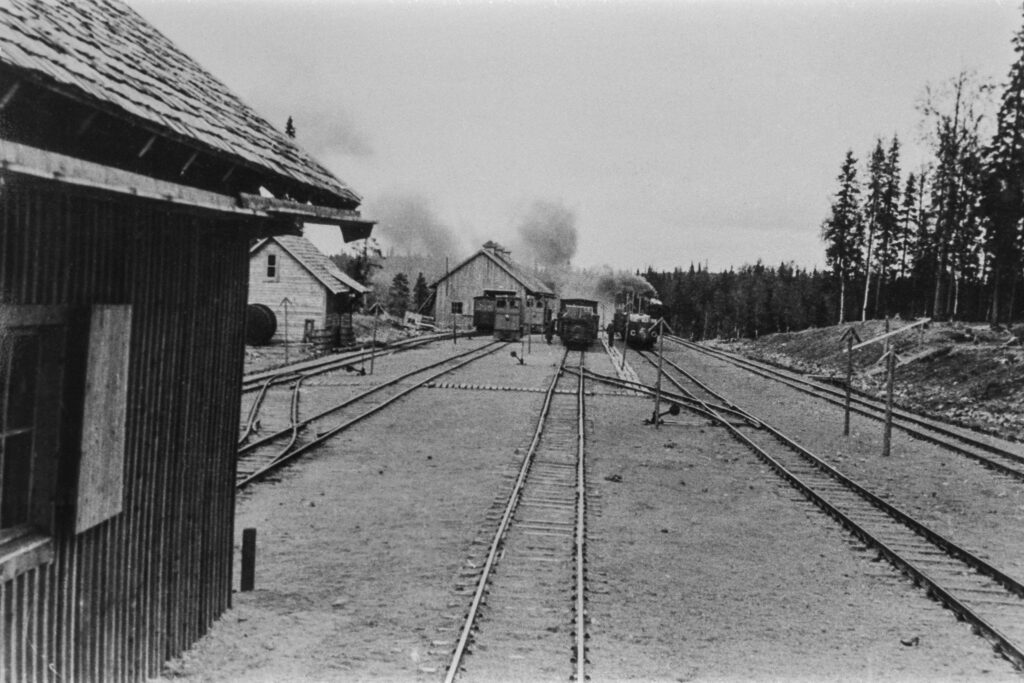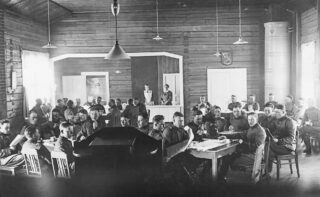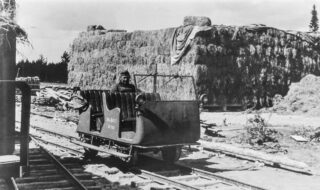The outbreak of war was generally feared in Kuusamo at the end of the 1930s, and it was thought that Soviet forces would attack Finland through this route. During the additional refresher exercises in fall of 1939, Separate Battalion 16 was stationed in the area, to which most conscripts from Kuusamo were called. In November, the group held exercises along Road Lämsänkyläntie, which leads from the church town to the border. At the beginning of the war, the largest forces of the Red Army in this direction were, however, concentrated in Salla and Suomussalmi. After the hostilities began, the main part of the battalion stationed in Kuusamo was sent to Alassalmi in Suomussalmi to receive the enemy who had crossed the border at Juntusranta.
In the Battle of Alassalmi, which began on December 6th, the battalion consisting of men from Kuusamo, Posio and Salla repelled the Soviet attack and at Christmas time forced the enemy, who had suffered heavy losses, to retreat to the surface of the border at Juntusranta.
Most of the men from Kuusamo who participated in the war served for the rest of the Winter War in the northern part of Suomussalmi, led by lieutenant colonel Ilmari Susiluoto, in a group called Susi (‘wolf’), where the battalion was already attached in the early stages of the war. Part of the battalion was stationed in Kuusamo, where it repelled the attack attempts of a few small Soviet detachments. Men from Kuusamo also participated in the war in other fronts. A total of 55 men from Kuusamo fell in the battles of the Winter War.
Most of the civilian population of Kuusamo was evacuated to the southern part of Pudasjärvi and Ii after the war started. In the early stages of the war, the Finnish troops burned the buildings in the eastern parts of Kuusamo to prevent the attacker from using them to their advantage. Soviet bombers made several attacks on Kuusamo during the war, causing some destruction.
Time of Interim Peace
After the end of the Winter War, Kuusamo lived in uncertainty. Characteristic of this period, which lasted more than a year, were the fortification works, which were used to secure the roads leading to the eastern border. The strongest of the structures was the chain of bunkers and trenches built on the east side of the church town as part of the Salpalinja fortification line. In addition to the people of Kuusamo, many workers from other parts of Finland participated in the work, and one of its financiers was the Swedish state.
The first German troops came to Kuusamo in early June. They stayed in tents in the church town and continued towards Salla. A rumour circulated among Kuusamo residents that the Germans were continuing their journey across the eastern border. The local lotta greeted the Germans by throwing marsh-marigolds on the flats of the trucks carrying the crew as the cars crossed the River Nilojoki.


